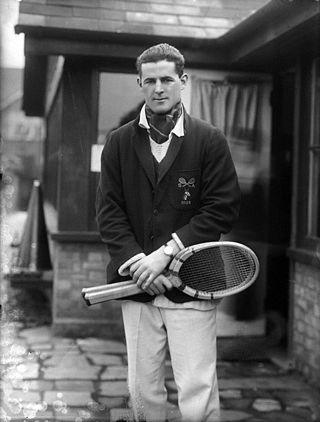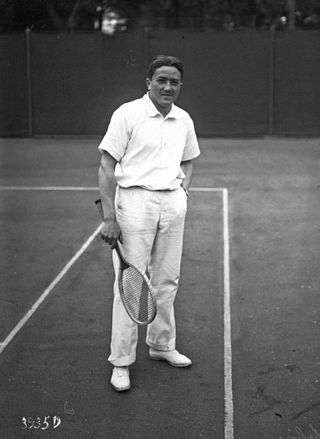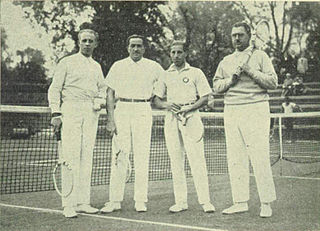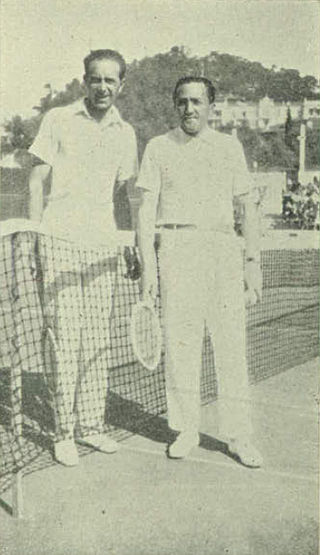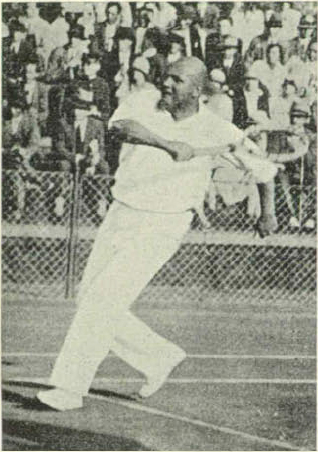Finals

Men's singles
(Incomplete roll)
| National Championships | ||||
|---|---|---|---|---|
| Year | Champion | Runner-up | Score | |
| 1894 | | | 6-4, 11-9 [1] | |
| 1895 | | [11] | ||
| 1896 | | [4] | ||
| 1897 | | [4] | ||
| 1898 | | | [4] | |
| 1899 | | [2] | ||
| 1900 | | [2] | ||
| 1901 | | [b] | [12] | |
| 1902 | | | [12] | |
| 1903 | | | [5] | |
| 1904 | | [5] | ||
| 1905 | | [13] | ||
| 1906 | | [14] | ||
| 1907 | | | [4] | |
| 1908 | | | [15] | |
| 1909 | | [13] | ||
| 1910 | | [13] | ||
| 1911 | | [4] | ||
| 1912 | | [16] | ||
| 1913 | | | 3–6, 6–4, 6–1 [17] | |
| 1914 | | | 8–6, 6–2, 6–2 [18] | |
| 1915–1919 | Not Held [c] | |||
| 1920 | | |||
| 1921 | | [19] | ||
| 1922 | | [13] | ||
| 1923 | | [20] | ||
| 1924 | | [4] | ||
| 1925 | | [4] | ||
| 1926 | | [4] | ||
| 1927 | | [4] | ||
| 1928 | | [21] | ||
| 1929 [f] | | | 7–5, 4–6, 6–3 ret. [22] | |
| 1930 | | | 6–1, 6–2, w/o [23] | |
| 1931 | | | 6–2, 6–4, 3–6, 6–1 [24] | |
| 1932 | | |||
| 1933 | | | 6–3, 6–3, 7–5 [25] | |
| 1934 | | [26] | ||
| 1935 | | | 6–4, 9–7, 6–0 [26] | |
| 1936 | | | 6–4, 6–3, 6–3 [27] | |
| 1937 | | | [28] | |
| 1938 | | | 3–6, 9–7, 4–6, 6–3, 6–3 [29] | |
| 1939 | | |||
| 1940 | | [30] | ||
| 1941 | Not Held [31] | |||
| 1942 | | | 6–0, 6–1. 6–3 [32] | |
| 1943 | | | 2–6, 8–6, 5–7, 1–6 [33] | |
| 1944 | | | 6–3, 6–0, 6–4 [34] | |
| 1945 | | | 6–2, 6–1, 6–1 [35] | |
| 1946 | | | 6–0, 6–2, 3–6, 6–0 [36] | |
| 1947 | | [13] | ||
| 1948 | | [13] | ||
| 1949 | | [37] | ||
| 1950 | | [37] | ||
| 1951 | | [13] | ||
| 1952 | | [37] | ||
| 1953 | | [37] | ||
| 1954 | | [38] | ||
| 1955 | | [13] | ||
| 1956 | | [13] | ||
| 1957 | | [30] | ||
| 1958 | | [30] | ||
| 1959 | | [30] | ||
| 1960 | | [30] | ||
| 1961 | | [30] | ||
| 1962 | | [30] | ||
| 1963 | | [30] | ||
| 1964 | | [30] | ||
| 1965 | | [30] | ||
| 1966 | | [30] | ||
| 1967 | | [30] | ||
| 1968 | | | 5–7, 6–3, 6–3, 6–3 [39] | |
| 1969 | | | [30] | |
| 1970 | | [13] | ||
| 1971 | | [13] | ||
| 1972 | | [13] | ||
| 1973 | | [30] | ||
| 1974 | | [30] | ||
| 1975 | | [30] | ||
| 1976 | | [30] | ||
| 1977 | | [13] | ||
| 1978 | | [37] | ||
| 1979 | | [37] | ||
| 1980 | | [13] | ||
| 1981 | | [40] | ||
| 1982 | | [13] | ||
| 1983 | | [13] | ||
| 1984 | | [13] | ||
| 1985 | | [13] | ||
| 1986 | | [41] | ||
| 1987 | | [42] | ||
| 1988 | | [43] | ||
| 1989 | | | 6–4, 1–6, 7–6, 6–2 [44] | |
| 1990 | | | 6–3, 1–6, 7–6, 6–3 [41] | |
| 1991 | | [43] | ||
| 1992 | | [13] | ||
| 1993 | | [13] | ||
| 1994 | | [37] | ||
| 1995 | | [45] | ||
| 1996 | | [13] | ||
| 1997 | | [37] | ||
| 1998 | | [46] | ||
| 1999 | | | 6–2, 6–4 [9] | |
| 2000 | | | 7–6, 3–6, 6–2 [45] | |
| 2001 | | | 6–4, 4–6, 6–3 [47] | |
| 2002 | | | 6–1, 3–6, 6–0 [48] | |
| 2003 | | | 7–6, 4–6, 6–2 [49] | |
| 2004 | | | [50] [51] | |
| 2005 | | | 6–1, 6–0 [50] | |
| 2006 | | | [43] | |
| 2007 | | | 5–7, 6–3, 6–2 [10] | |
| 2008 | | | [30] | |
| 2009 | | | [30] | |
| 2010 | | | 7–6, 6–1 [8] | |
| 2011 | | | 6–3, 6–0, 6–4 [52] | |
| 2012 | | | 6–3, 6–3, 6–4 [53] | |
| 2013 | | | 7–6, 5–7, 6–2, 6–2 [54] | |
| 2014 | | | 6–7, 7–6, 7–6, 6–3 [55] | |
| 2015 | | | 6–1, 6–1, 6–1 [56] | |
| 2016 | | | 7–6(4), 6–2, 6–2 [57] | |
| 2017 | | | 6–2, 7–6(5), 5–7, 6–2 [58] | |
| 2018 | | | 6–3, 6–1 [59] | |
| 2019 | | | 7–6(5), 6–4 [60] | |
Men's doubles
| Doubles Championships | |||
|---|---|---|---|
| Year | Champion | Runner-up | Score |
| 1909 | | [61] | |
| 1910 | | [61] | |
| 1911 | | [61] | |
| 1912 | | [61] | |
| 1913 | | | 6–3, 3–6, 6–3 [17] |
| 1914 | | [61] | |
| 1920 | | [61] | |
| 1921 | | [61] | |
| 1922 | | [61] | |
| 1923 | | [61] | |
| 1924 | | [61] | |
| 1925 | | [61] | |
| 1926 | | [61] | |
| 1927 | | [61] | |
| 1928 | | [61] | |
| 1929 | | [61] | |
| 1930 | | [61] | |
| 1931 | | [61] | |
| 1932 | | [61] | |
| 1933 | | [61] | |
| 1934 | | [61] | |
| 1935 | | [61] | |
| 1936 | | [61] | |
| 1937 | | [61] | |
| 1938 | | [61] | |
| 1939 | | [61] | |
| 1940 | | [61] | |
| 1942 | | [61] | |
| 1943 | | [61] | |
| 1944 | | [61] | |
| 1945 | | [61] | |
| 1946 | | [61] | |
| 1947 | | [61] | |
| 1948 | | [61] | |
| 1949 | | [61] | |
| 1950 | | [61] | |
| 1951 | | [61] | |
| 1952 | | [61] | |
| 1953 | | [61] | |
| 1954 | | [61] | |
| 1955 | | [61] | |
| 1956 | | [61] | |
| 1957 | | [61] | |
| 1958 | | [61] | |
| 1959 | | [61] | |
| 1960 | | [61] | |
| 1961 | | [61] | |
| 1962 | | [61] | |
| 1963 | | [61] | |
| 1964 | | [61] | |
| 1965 | | [61] | |
| 1966 | | [61] | |
| 1967 | | [61] | |
| |}
- two times champion Roderich Menzel
- two times champion Ede Tóth
- 16 times champion Béla von Kehrling
- (from left) International finalists Ignacy Tłoczyński and Kho Sin-Kie
- Seven-times champion Attila Balázs








